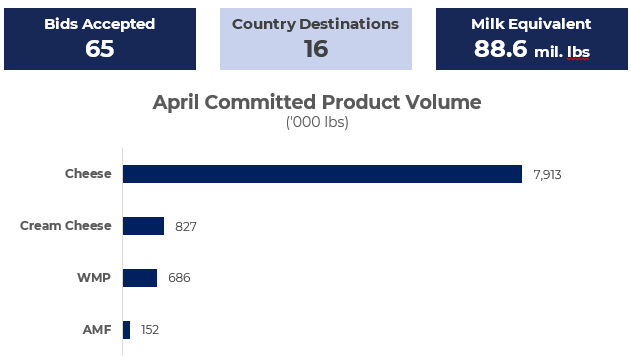
By Tony Rice, Director, Trade Policy, National Milk Producers Federation
America’s dairy producers rely on a global supply chain that is reliable, transparent, and predictable to thrive in the competitive global dairy market — a reality made apparent during the COVID-19 pandemic, when supply chain snarls created headaches for dairy and the entire global economy.
But while many pandemic-era export issues have eased, an emerging threat to secure, reliable U.S. rail shipping is worsening.
Organized crime groups are increasingly breaking into shipping containers headed from the Midwest to West Coast ports in search of high-value consumer products. That’s creating serious food safety issues and forcing exporters to return the cargo at a financial loss, with limited recourse for insurance claims.
The National Milk Producers Federation (NMPF), in collaboration with the U.S. Dairy Export Council (USDEC), is tackling the issue on two fronts. Exporters experiencing break-ins are being connected with relevant railroads to determine best practices to mitigate theft, including lock and tracking recommendations. Meanwhile, NMPF is engaged with the Federal Bureau of Investigations, Surface Transportation Board, Homeland Security Investigations, and rail police forces to identify options to heighten policing efforts and best practices for reporting break-ins. NMPF and USDEC are also pursuing new appropriations funding for a Homeland Security task force dedicated to addressing supply chain theft, with language specific to agricultural cargo.
Encouragingly, the Biden Administration is implementing new guardrails to prevent dairy exporters from having to deal with the sorts of record costs, unprecedented fees, and unpredictable shipping schedules that occurred during the pandemic.
That work started two years ago when NMPF fought hard to help shape and pass into law the Ocean Shipping Reform Act of 2022, which mitigated unfair and harmful carrier practices. The law’s far-reaching nature has resulted in a lengthy and deliberative implementation process — one to which NMPF has dedicated almost two years of engagement to ensure the rules are fair for dairy exporters.
That work paid off when the Federal Maritime Commission’s final rule on detention and demurrage billing practices took effect May 28. The rule reflects official recommendations from NMPF and USDEC, including important clarity on who should be billed, the time frames for billing, and a streamlined dispute process.
In tandem with upcoming rulemaking from the maritime commission on what determines a carrier’s unreasonable refusal to deal or negotiate, these statutes will bring much-needed stability to what has been a difficult shipping market to navigate. These developments are especially timely given the potential disruptions that a full reopening of the Red Sea would have on sailing schedules, as well as ongoing East Coast port labor negotiations.
While there are many moving pieces in shipping legislation, NMPF is engaging with Congress on two critical new bills. The bipartisan Ocean Shipping Reform Implementation Act would update supply chain data standards, and the Ocean Carrier Rail Storage Charges Act is a bill to clarify jurisdictional gaps between the Surface Transportation Board and the Federal Maritime Commission regarding fees oversight.
As dairy exporters navigate uncertain waters, NMPF and USDEC remain dedicated to supporting a resilient and secure supply chain. The work continues to ensure that U.S. dairy exporters continue to thrive in a dynamic global market.
This column originally appeared in Hoard’s Dairyman Intel on June 13, 2024.






